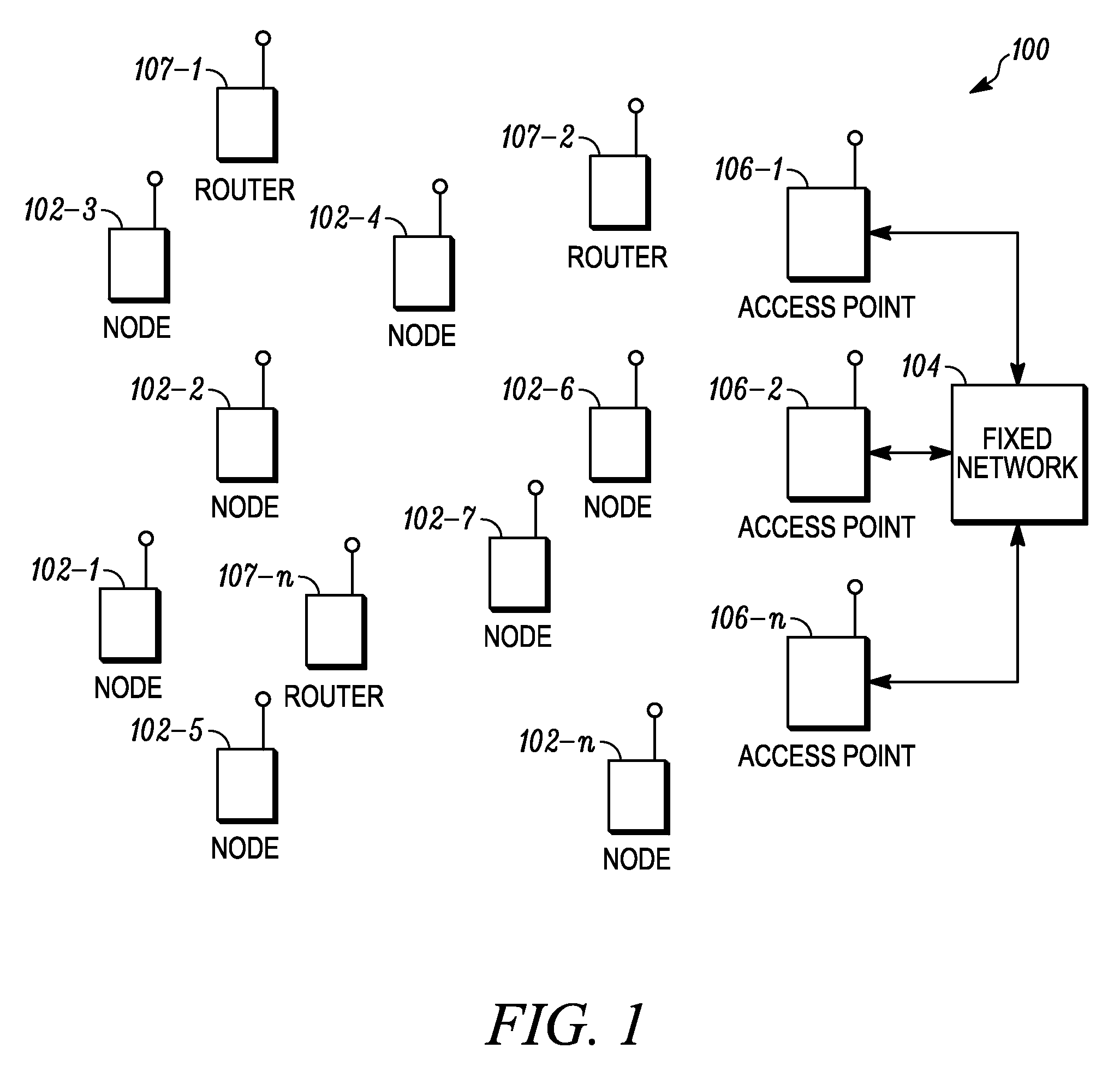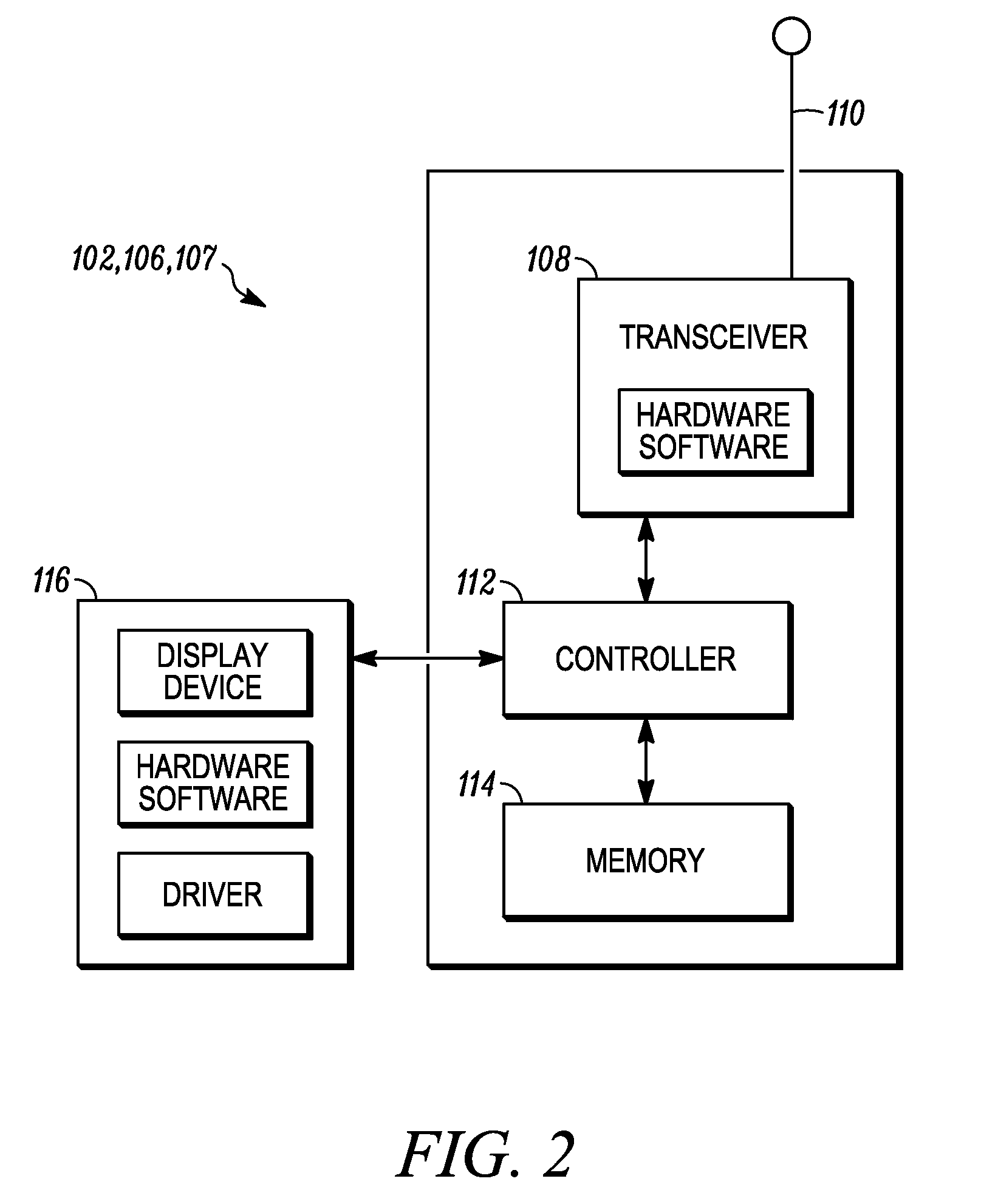System and method employing algorithms and protocols for optimizing carrier sense multiple access (CSMA) protocols in wireless networks
a wireless network and carrier sense multiple access technology, applied in the field of system and method employing algorithms and protocols for optimizing carrier sense multiple access (csma) protocols in wireless networks, can solve the problems of low efficiency of radio resources and unreasonable assumption
- Summary
- Abstract
- Description
- Claims
- Application Information
AI Technical Summary
Benefits of technology
Problems solved by technology
Method used
Image
Examples
Embodiment Construction
[0019]The following describes a network capable of employing the HMT technology in very large commercial applications having a very large number of terminals and servicing very large geographic areas. In doing so, the network employs a number of architectural changes to the basic HMT system as described in U.S. patent application Ser. No. 09 / 897,790 entitled “Ad Hoc Peer-to-Peer Mobile Radio Access System Interfaced to the PSTN and Cellular Networks”, filed on Jun. 29, 2001, the entire content of which is incorporated herein by reference.
[0020]FIG. 1 is a block diagram illustrating an example of this type of ad-hoc packet-switched wireless communications network 100 employing an embodiment of the present invention. Specifically, the network 100 includes a plurality of mobile wireless user terminals 102-1 through 102-n (referred to generally as nodes 102 or mobile nodes 102), and can, but is not required to, include a fixed network 104 having a plurality of access points 106-1, 106-2...
PUM
 Login to View More
Login to View More Abstract
Description
Claims
Application Information
 Login to View More
Login to View More - R&D
- Intellectual Property
- Life Sciences
- Materials
- Tech Scout
- Unparalleled Data Quality
- Higher Quality Content
- 60% Fewer Hallucinations
Browse by: Latest US Patents, China's latest patents, Technical Efficacy Thesaurus, Application Domain, Technology Topic, Popular Technical Reports.
© 2025 PatSnap. All rights reserved.Legal|Privacy policy|Modern Slavery Act Transparency Statement|Sitemap|About US| Contact US: help@patsnap.com



